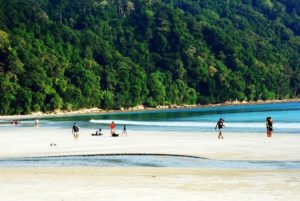Best baby carrier with quality shoe holders today: Kitchen supplies: Save money by scrounging from camping gear or well-worn items from your local thrift shop or home kitchen (not the fine china). Bring just enough pots, pans, plates, cups and utensils so that you can cook and eat each of your planned meals. Bring a small sponge and some biodegradable soap for washing dishes (well away from camp and water sources). A tiny towel also comes in handy. No need to buy a bunch of special “hiking clothes” for your first backpacking trip. Simply go through your fitness wear and find clothing made of moisture-wicking, quick-drying fabrics like nylon and polyester. (Moisture-wicking fabric pulls sweat away from skin to keep you dryer.) Avoid cotton, which slurps up water and takes a long time to dry when wet—that can chill you and, in a worse-case scenario, lead to hypothermia. Find even more information on shoe holster for backpack.
A third thing we loved is that it has an adorable sleeping hood, which also is great to protect baby’s head a bit from the sun and elements. Fourth, we loved that mom and dad’s comfort were taken into consideration throughout: nice wide waist belt, an unparalleled large lower back/lumbar support pad, super comfortable shoulder straps, all while staying quite lightweight. That lumbar pad is super important and really sets this carrier apart from the rest in terms of comfort during long-term use. Fifth, it has some additional little features that are worth mentioning: it comes in a ton of truly stylish and adorable styles, colors, and patterns, it has a convenient zippered pocket on the front for storing little things (phone, credit card, keys), and the carrier itself is adjustable in several ways to both the wearer and baby. In our testing, we also found that it was rather easy to put on and take off (after reading the manual and practicing for about 10 minutes), put a baby in and out, and that it was well-built and reliable. LILLEBaby has made some recent modifications to fix a strap issue, and the resulting carrier is very reliable. Downfalls? Well, not much, but if we are being picky: the storage pocket is on the outside of the zipper-down flap, so it’s hard to access when the flap is unzipped. Could have been nice to put the storage pockets on the waistband! Overall, a truly excellent carrier highly deserving of this spot on our list. Usually about $130, which is an excellent price for this quality, features, and versatility. It’s available in a ton of colors and patterns, like 20 of them or something!
Reducing backpack weight tip : Ultralight tent footprint/ groundcloth. Footprints and ground cloths act as a protective barrier in between the ground and the floor of your tent. They also prevent any water from seeping in from the ground through your tent floor. Use a painters tarp instead of buying the manufacturer’s footprint. You can find painter’s tarp at any hardware store. 2-3 mm thick is perfect. Cut it out to match the outline of your tent floor… and then cut off an inch border to make it slightly smaller than your tent floor. Trekking poles, not tent poles. Two trekking poles (plus your guylines) is all you need to keep your tarp supported. Many tarp systems only require one pole. See ultralight trekking poles. Read more information on https://ilouxnei.com/.
You can splurge on a lightweight tent shelter, but I find an inexpensive tent footprint does the job fine. The tent footprints tend to be pretty durable. I use it with cordage and sticks to create a basic lean-to. I also have an inexpensive bivy sack that I can use as a sleeping back. If you want extra warmth, you can stuff it with leaves or pine needles and wedge yourself in. Signaling for a rescue is just as important as the other items. The sooner someone knows to look for you, the better your chances of survival. I carry a lot of options here. Most of the ten hiking essentials can be used on a normal, everyday hike. For example, you’ll obviously drink water. But what happens when you are in an emergency situation?
